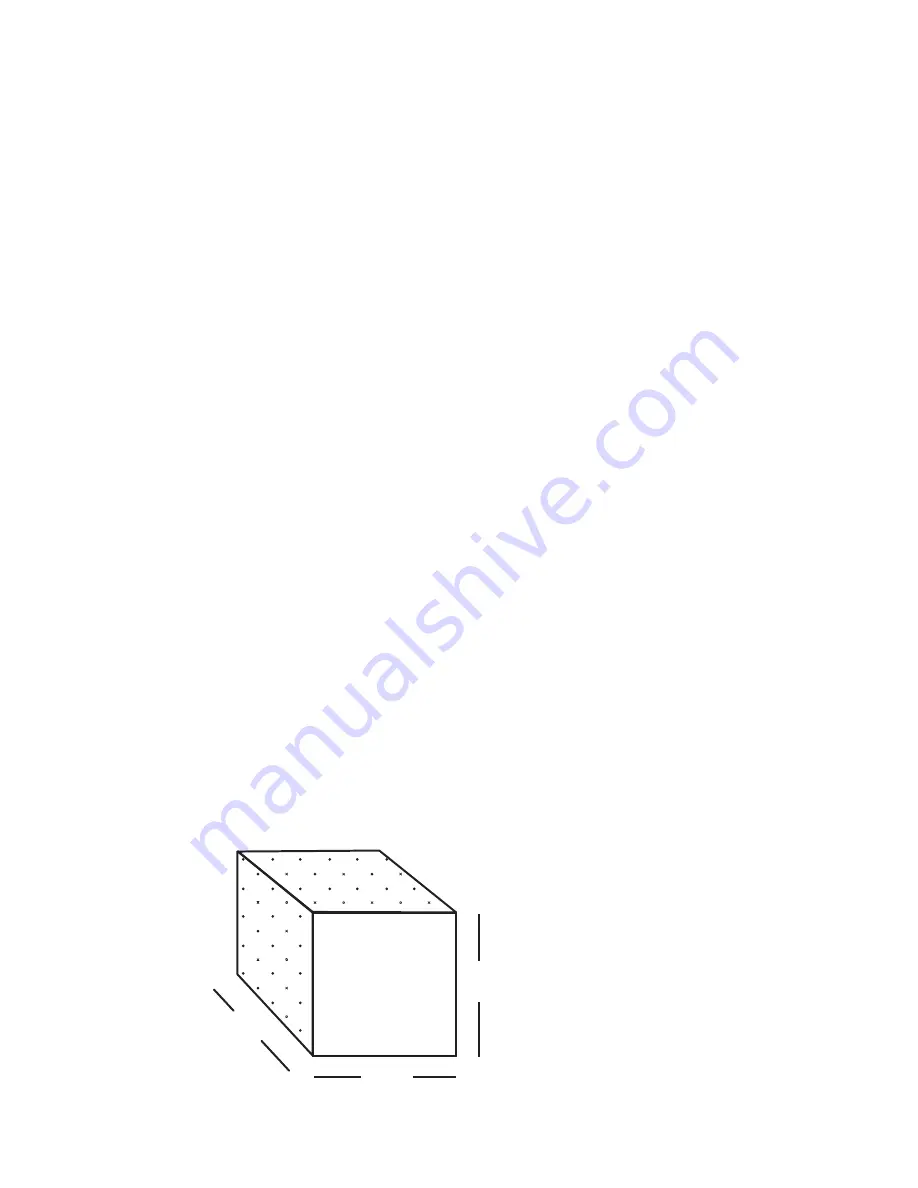
Damping material should also be used to line the internal walls to reduce any sonic reflection. Because
of the characteristics of a vented enclosure, subwoofers typically will become unloaded (act as if it is
not in a box) at frequencies of ½ octave below the enclosure tuning frequency. Using a high pass filter
/ subsonic filter will help prevent the subwoofer from unloading or exceeding its excursion capabilities.
It is important to stay within the recommended enclosure specifications. (PowerBass recommends port
placement to coincide on the same panel or baffle that the subwoofer resides on.
•
BANDPASS ENCLOSURE:
(NOT OPTIMUM)
The most common bandpass enclosure is a combination of
a sealed and a vented enclosure working together (4th order or single reflex bandpass system). The rear
of the speaker goes into the sealed chamber while the front of the speaker goes into the vented chamber.
Because the vent produces all the sound generated from this type of enclosure, sound quality may not be
as good as a well-designed ported or sealed design. Often the sacrifice for sound quality and subwoofer
cone control is greater SPL output. However unlike a sealed or vented enclosure, you can effectively in-
crease the enclosure sensitivity with the appropriate tuning choices. You can choose to design a narrow
frequency band with very high sensitivity or choose a wide frequency band with the sacrifice of lower
sensitivity. The damping effect of the vented chamber reduces the motion of the cone so that potentially
higher sound output is achieved without the subwoofer reaching its mechanical limits. Minor deviations
from design recommendations however may result in frequency response and distortion problems.
(If you are intending to use multiple subwoofers in your system, PowerBass recommends hav-
ing separate chambers for each subwoofer if the subwoofers will be operated by two different
amplified signals. This will prevent any possible cancellation.)
NOTE:
Due to the vented backplate, you must allow an additional 2" behind the subwoofer when
designing your speaker enclosure.
ENCLOSURE VOLUME
To calculate the volume required for your enclosure please refer to the Recommended Enclosures secction
of this guide for your specific model number. These are listed in both cubic feet and liters. One cubic foot is
expressed as 12" x 12" x 12" = 1728 cubic inches (see picture below).
12" x 12" x 12" = 1728
3
Inches"
12”
12”
12”
Summary of Contents for 2XL-1004D
Page 1: ...2XL SUBWOOFER SERIES Application Guide 2XL 1004D 2XL 1204D 2XL 1504D...
Page 2: ......
Page 18: ...INSTALLATION NOTES...






































